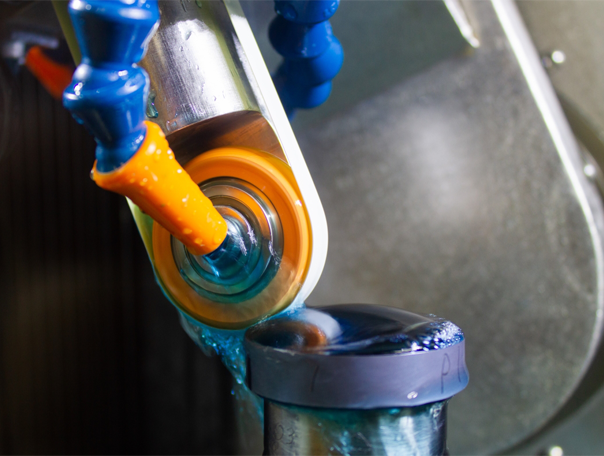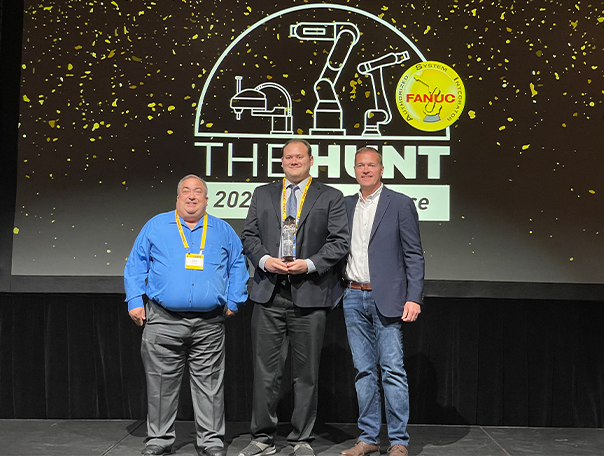
Asphere being polished on the PRO 80 UFF. As the asphere rotates about its optical axis, the UFF tool traverses from edge to edge across the surface, speeding up as it moves over the center.
When polishing aspheres using a sub-aperture polishing tool, the most difficult errors to fix are ones located on and around the optical apex, or center of the lens. New enhancements to U Series, the software which drives OptiPro’s UFF machines, have made it possible to achieve precision aspheric surfaces faster than ever before when using the R-Theta software option. The R-Theta process in U Series is designed to polish rotationally symmetric parts, from plano to aspheres. During this process, the optic rotates about its optical axis and the UFF polishing tool traverses across its surface from edge to edge. The process can remove uniform amounts of material to gray out the surface as well as correct figure errors to achieve sub-micron accuracies. Before graying out the surface, it is necessary to take a spot on a sacrificial part to establish a volumetric removal function. With the removal function captured, the user can then optimize polishing toolpaths.
Controlling and Correcting Center Artifacts with Scalable Center Speed Control
With the latest advancements to our U Series software, the user now has considerable control in preventing and controlling center artifacts when graying out and performing corrections. This capability results in faster polishing times due to fewer corrections needed to make precision aspheres that meet your customer’s requirements.
OptiPro has added 3 features that help with controlling and preventing center artifacts:
Scalable Center Aperture: Allows the user to control the diameter at which the algorithm speeds up or slows down across the optical center. In areas where less material needs to be removed, the machine will speed up. Conversely, the machine will slow down when needing to remove more material.
Scalable Belt Speed Over Center: Allows the user to speed up or slow down the belt of the UFF polishing tool across the as-programmed Center Aperture. The belt speed will increase when more material needs to be removed and slow down when less removal is needed.
Scalable Removal Rate: Allows the user to scale the removal rate up or down. Removal rate scales linearly with belt speed, so if the user scales the removal rate up, the belt speed will increase. If the removal rate is scaled down, the belt speed slows down. This capability makes it possible to perform a subsequent UFF pass using the original spot. By only needing to take one spot to gray out the surface and perform a correction run, manufacturers can increase asphere production by spending less time in the development stage.
UFF Machines for Aspheres up to 500mm in Diameter
Four different machine sizes are available, each ideal for a range of part diameters: PRO 80 UFF for ≤ Ø 80mm, PRO 160 UFF for ≤ Ø 160mm, UFF 300 for ≤ Ø 300mm, and UFF 500 for ≤ Ø 500mm. If you are looking to polish aspheres larger than 500mm, OptiPro can develop a custom machine tailored to your requirements. With a variety of different UFF belt types that can be used with coolant or polishing slurry, chances are you will find the right recipe for your asphere project. Whether you need to polish aspheres made from optical glass, technical ceramics, or IR materials such as silicon, you can produce aspheres with sub-micron form error faster than ever with UFF and the latest version of U Series. Reach out to OptiPro’s team today to find the right machine for your application.




